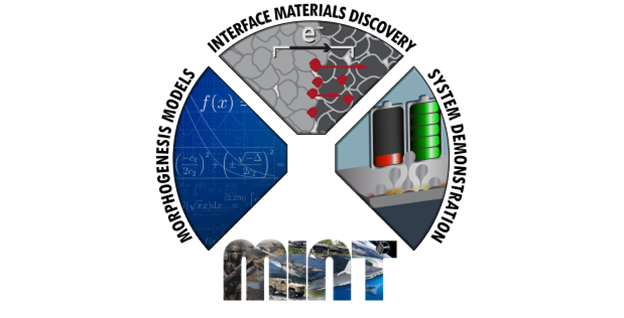Both persistent battery power and anti-corrosion coatings are key to sustaining military operations, however there is an inability to address microscopic irregularities that form at the interfaces of electrochemical materials. To find a solution, DARPA announced the Morphogenic Interfaces (MINT) program, to develop self-regulating interfaces that exploit detrimental local gradients to maintain optimal functionality over planned operational life cycles.
Batteries and anti-corrosion coatings both rely on electrochemical reactions at material interfaces from the atomic through millimeter scale. It is at these microscopic interfaces that high energy density solid-state batteries and novel corrosion resistant coatings/alloys run into problems.
In solid-state batteries, as positively charged ions are deposited on the negative electrode during charging and the positive electrode during discharging, changes to the interface leads to nanoscale voids at solid/solid ion transfer interfaces. With each cycle the number and size of voids increase rapidly, diminishing battery capacity until it can no longer hold a charge. Solving the voids issue at these interfaces is key to enabling practical solid-state batteries. Because solid-state batteries do not use liquid electrolytes, they’re inherently safe from catastrophic fire up to 150 degrees Celsius.
Corrosion resistant coatings/alloys on ship hulls, power plants and critical aircraft surfaces have similar electrochemical reactions at solid/liquid and solid/vapor interfaces. In aggressive corrosive environments, nanoscale pits form at the material interface due to corrosion penetrate the underlying metal and rapidly expand into larger cracks, weakening the hull, control surfaces, and engine components.
MINT is focused on developing novel interface materials that can exploit local gradients to consistently form and reform at the interface. Efforts are focused on two application-centric areas. The first is solid/solid charge transfer interfaces to enable solid-state batteries with unprecedented combinations of energy density and cycle life. The second focus area addresses solid/liquid and solid/vapor interfaces for high- performance corrosion resistant coatings and alloys.
For more information about the MINT Proposers Day webinar, including registration details, visit: https://go.usa.gov/x68qB.
Original Release: DARPA

